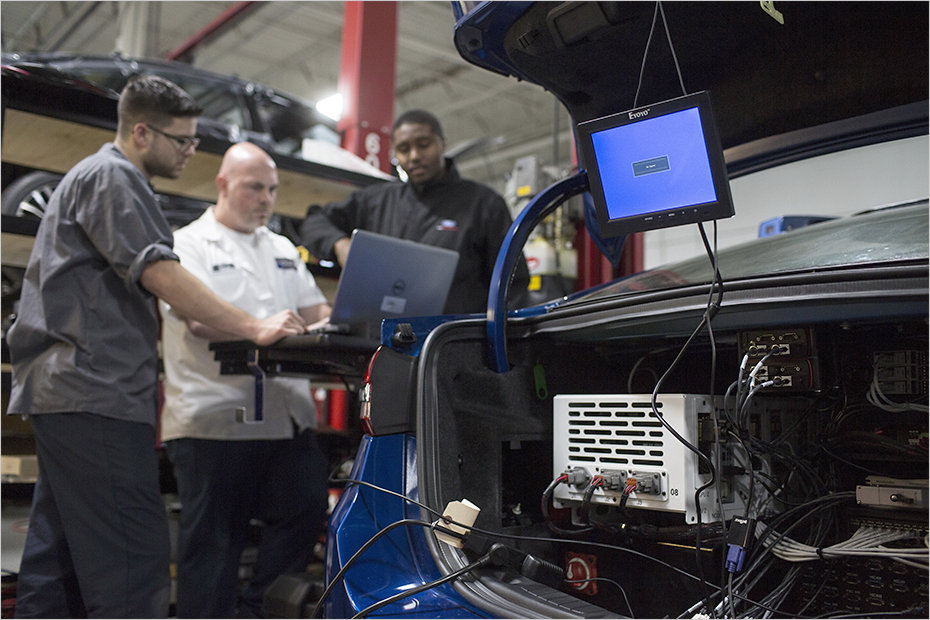In 2013 Ford presented its first autonomous driving research vehicles. Now follows an improved prototype which, like its predecessor, is based on the FusionHybrid (which is called Mondeo). The improvements compared to the old researcher include slimmer LiDAR sensors (Light Detection And Ranging), of which only two instead of four are now required. The computing power of the computer in the trunk was also improved.
LiDAR, cameras and radar
The two LiDAR sensors are the size of ice hockey pucks and are located on the A-pillars of the Fusion. They create a beam grid around the car and scan an area of about two football fields. In doing so, they not only capture position but also the size and shape of objects. In addition, there are three cameras placed in a kind of roofing, and one on the windshield. This means, among other things, whether a traffic light is red or green. In addition, the car has radar sensors, even in poor visibility (if the cameras are almost blind) still provide data.
Ford's hybrid approach
The computer in the luggage compartment provides the computing power of several high-end PCs and processes per hour a data volume of one terabyte. A software developed by Ford itself creates a model of the environment. Two types of environmental perception are combined: mediated and direct perception. The former compares the sensor data with the high-resolution map material and can thus localize itself. Since static environmental factors such as traffic lights, stop signs and pedestrian crossings are listed in the navigation data, these static objects can also be considered. More computing power requires direct perception. For this, the dynamic objects in the environment - such as pedestrians, cyclists or other cars - must be recognized and their movement calculated in advance. Gestures like the hand signals of a policeman are also interpreted.
Autonome Ford vehicles from 2021
In order to provide the power for the whole additional technology, the engineers tap the high-voltage battery of the FusionHybrid. Since the amount of energy stored there is not sufficient, future autonomous cars will also have a current generator on board. Ford will work on such challenges in the coming years. From 2021, the Americans want to produce autonomous cars in large series. However, not yet for the normal car driver, but for mobility services such as ride sharing and ride hailing. These cars will no longer have steering wheels and pedals. In 2017 Ford will triple its autonomous test fleet in the US - from currently 30 to about 90 vehicles. In Europe, Ford plans to launch the 2017 trial.




EmoticonEmoticon